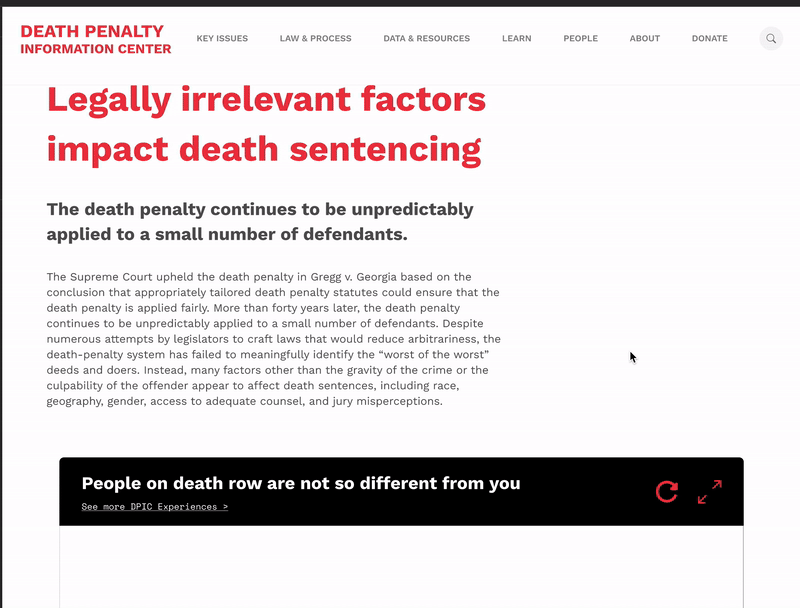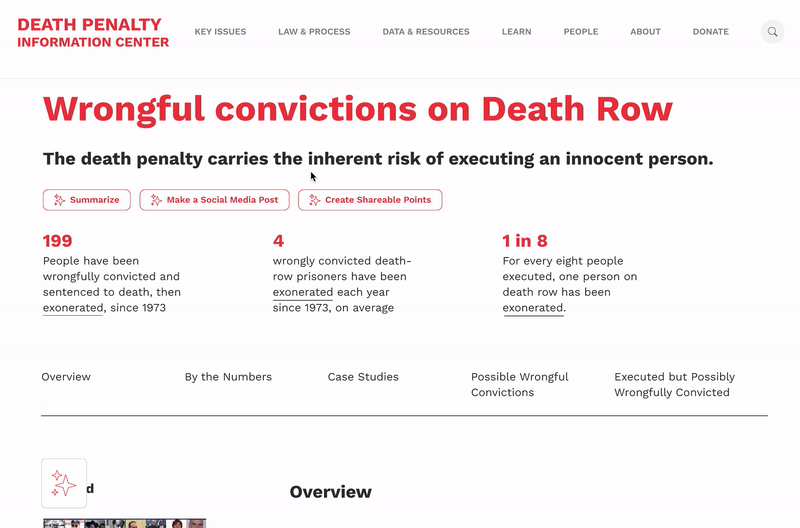We designed several content models for DPI
different content models
rounds of iterations on content models
style, tone and voice guide
We created templates for DPI to look at for reference when creating these specific page types and provided an example filled out template to show how this might be presented on the website.
Based on our concept testing with 12 participants,
- 25% more participants had a clear stance, and
- 40% more participants could provide factual supporting evidence after using our content models.
(See more from our content model testing
here).
This is an example of one of our content models: the home page.
In addition, we made edits to our models based on previous testing. For example, 9/12 people in previous concept testing ignored the sidebar on an article page (shown below on the left).
This led us to update the article page to be a single column (shown below on the right), including related articles in the middle of the content instead of on the sides.
Lastly, sometimes DPI uses certain legal terms like “exonerated” because they are needed for people to best understand the death penalty. However, we know from research that
new learners often don’t know this word. Because of this, we would recommend specific capabilities like a
hover over feature that provides easy to understand definitions in our guide and content models. This is an example of how our style, tone, voice guide will be presented on the website.
The guide will include an outline of important things for DPI to consider in their content’s voice of tone, as well as branding guidelines. We filled in examples of how these sections could look. However, because we are not experts in DPI’s branding and content strategy, we also provided instructions on how DPI staff should continue to use and iterate on the guide.
Click
here to see the style, tone and voice guide.










